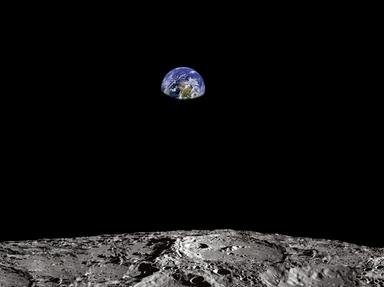Quiz Answer Key and Fun Facts
1. Earth revolves around the sun every 365.22 days or so in an elliptical orbit with an eccentricity of about 0.017. The perihelion, or closest point to the sun, is about 91.4 million miles. Around what date does this occur?
2. Space agencies around the globe try to create launch sites as close to the equator as economically possible. Which of these four choices is *NOT* a valid reason for this?
3. The Space Shuttle launch sequence is very structured. Which of the following happens before the others in the launch sequence?
4. A geosynchronous or geostationary orbit has a period of 24 hours, thereby keeping it roughly over the same area of land on Earth. Which of the following would be a good reason to have a satellite in a geosynch/geostat orbit?
5. Which type of satellite orbit would be most effective for environmental mapping of the entire planet?
6. When satellites or spacecraft have to change orbit altitude or orbit shape, which is the most fuel efficient way for them to do so?
7. In an elliptical orbit around Earth, which term describes the point in the orbit where the satellite is the closest to Earth?
8. How does the space shuttle generate water in space?
9. How does the Space Shuttle regulate heat in orbit, especially during portions of the orbit that are in sunlight?
10. What is the primary element from the periodic table present in the Space Shuttle's Thermal Protection System exterior tiles?
Source: Author
evil44
This quiz was reviewed by FunTrivia editor
bloomsby before going online.
Any errors found in FunTrivia content are routinely corrected through our feedback system.

